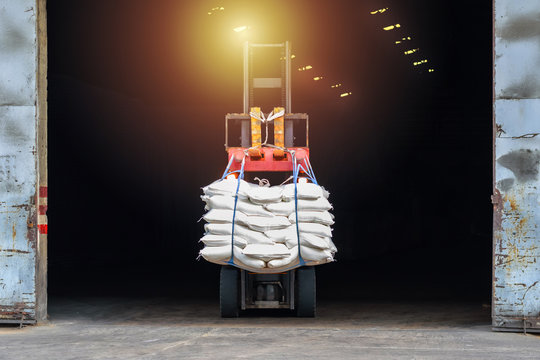Best Practices to Stuff a Container
- Containers should have enough lashing points of the strength we need.
- Container and packing requirements should be confirmed in writing between the parties.
- Right equipment to load and unload containers should be in place.
- Temperature control, a fan, or extra ventilation shouldn’t be seen as an extra cost, because when it’s 25 degrees outside, it might be 50 degrees inside of the container. A modest investment in these can save cargo from being roasted.
- Changes in climate can heavily affect cargos enroute, so they shouldn’t be overlooked.
- No smoking should be allowed around the containers, not to mention inside of them.
- When inside the container, be aware of any residues, they might be hazardous. If you’re in doubt, return the container for cleaning.
- Be aware of structural damages in and out of the container, that can cause serious injury as well as damage cargo.
- Holes caused by handling equipment are causes of wet damage.
- Be aware of the stains on the floor, or in the area of the doors, they might be a sign of leakages.
- Watch out for leftovers from the last job, there might be nails on the ground.
- Look out the labels, stickers on the container, particularly Dangerous Goods ones – they could lead to confusion, misrouting, and delay of your cargo.
- Before completing checking, do a light test to reveal any small holes.
- Less free space means less risk of cargo shifting. Try to leave minimum space inside of a container.
- Weight must be evenly spread inside the container, not just end to end, but side to side as well.
- Always keep the centre of gravity as low as possible.
- Don’t exceed the container’s maximum payload, or any weight restrictions along its intended route.
- Don’t overlook how the goods will be unpacked, keep in mind that when loading the container in the first place. In doubt, ask your consignee.
- All packaging and packing materials must be kept dry.
- Be aware of any quarantine rules at the destination of the goods.
- Try to use a stretch or shrink wrapping as they can provide high protection against wet damage.
- If the cargo doesn’t fill the container, cover the floor with an even height. If you’ll leave space, leave it at the centre.
- If you can’t fill the space, then vertical separator should be used to restrain the goods.
- Don’t forget that cargoes can harm each other too. Use airbags if necessary as they are easy to use alternatives to conventional shoring.
- Don’t place the airbags where they can force the doors open.
- Make a point of shoring and blocking the face of the stows strongly. Otherwise, damages and injuries could happen by cargos falling out when the doors are opened.
- Large, heavy items should be placed centrally.
- Make sure you know the safe loading limits of the lashing points.
- If possible, avoid making holes right through the floor.
- Leave nails easy for the receiver to pull out. Don’t pound them until the end.
- Always place heavy items at the bottom, light ones on top.
- Use separators to protect cargos from sharp edges or corners.
- Liquids should be placed underneath dry goods.
- Make sure drums or barrels are not leaking.
- It’s good practice to leave any wood treatment certificate on the container.
- If you use your own seals, never leave them unattended, keep them under lock and key.
- Use bolt seals if possible rather than strip seals because strip seals can be easily ripped.
- It’s better if only one senior person uses the seals.
- Make a record of the date, the number of the container which the seal is attached, and name of the person who is responsible for the seal. It’s better this to be a supervisor rather than anyone involved in the packing.
- Make sure your seal is correctly fitted on the door and tightly tucked.
- Whoever fits the seal must enter the seal number on all the shipping documents.
- Don’t leave the shipping documents lying around. Copies of them, or information they contain are the basic ingredients for fraud. Have them under lock and key. Good procedures keep the thieves away.
- Declare your cargo weight accurately.
- Before opening up a container, pay attention to any notices or labels in and out of the container.
- People who are responsible for packing containers should get training before they start working.






